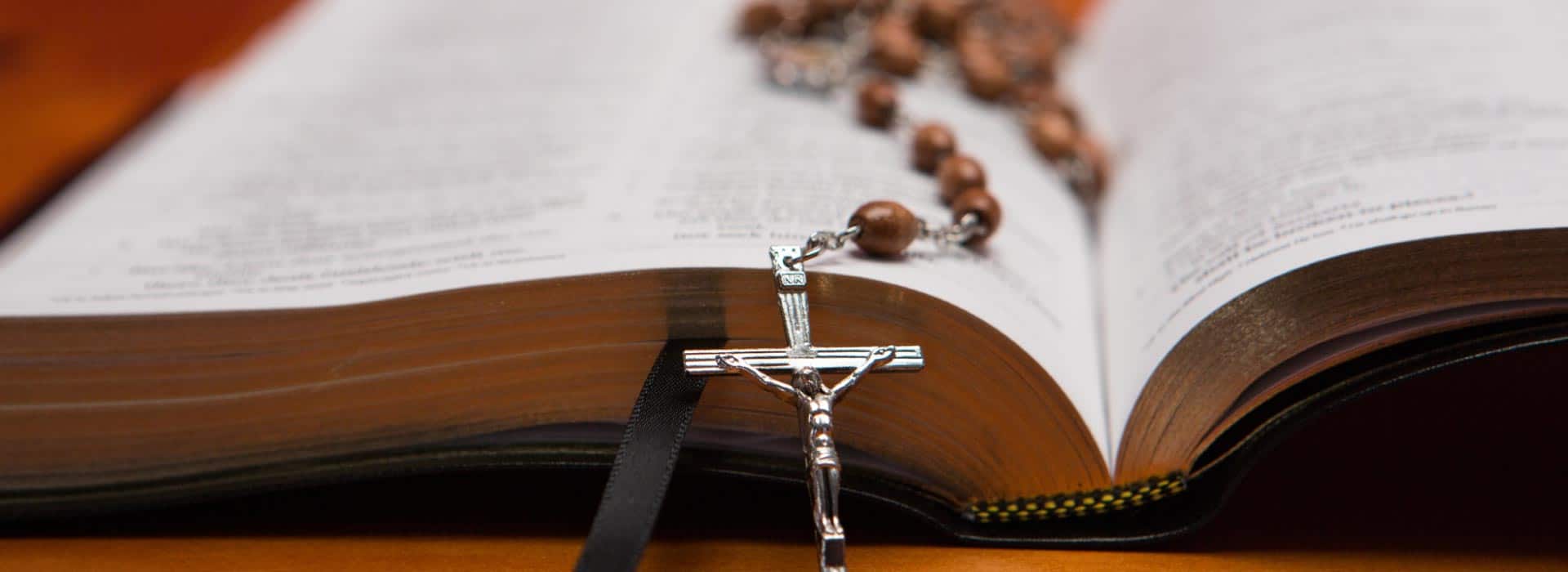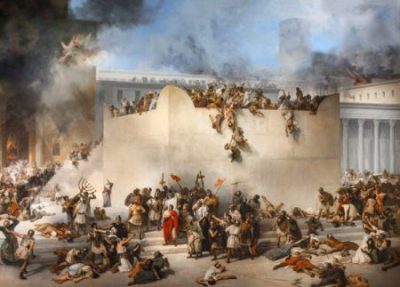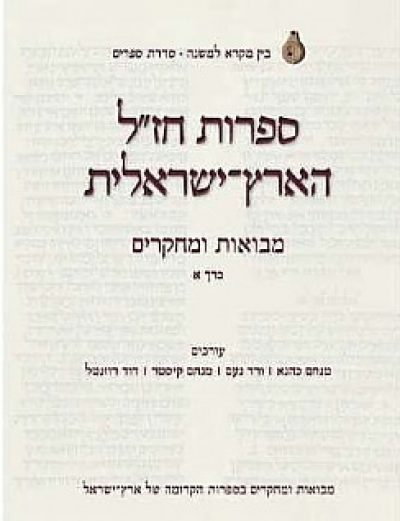ANOTHER WAY OF SEEING IT: ETHNIC IDENTITY – “JEWS ACCORDING TO GEOGRAPHY”
It is important to remember that Jews traditionally have never seen themselves as a religion only – as many other religions do, such as Islam or Christianity. Jews have seen themselves as a religious group AND as a People, at one and the same time. In other words, they have traditionally seen themselves as an ethnic group with a distinct religious faith, a definition in which the idea of a separate ethnicity and history is at least as important as the religious ideas which have defined the culture of the People for thousands of years. This is a very unusual phenomenon in the world and perhaps for that reason it is often very hard for non-Jews – and even many Jews, to tell the truth – to grasp. But it is very important to understand the inseparability of the ethnic and the religious.
As far back as we can trace the Jews as a collective, they have seen themselves both as an ethnic group and as a religion. According to traditional practice, if a person decides to become a Jew, he or she receive a new ancestry and history, seeing themselves as tracing themselves back to Abraham and Sarah, traditionally seen as, respectively, the father and mother of the Jewish People. In other words, if you become Jewish, you take on not only the Jewish faith or religion, you take on yourself the history and peoplehood of the Jewish group. You become part of the Jewish People, not only a believer in the Jewish religion.
However, it is not quite so simple. Thousands of years ago, as mentioned earlier, the Jewish collective began to split up into many different sub-groups geographically, initially in the ancient East and Middle East (especially in important centres such as today’s Iraq and Egypt). Subsequently, many Jews went east and over time they found themselves in almost every country in the world, sometimes in large groups and sometimes very small. Today, Jews exist in many dozens of different countries around the world. For our purposes, it is important to understand that although many Jews left the Jewish People and stopped seeing themselves as Jews, dozens of different groups of Jews retained their sense of being Jewish and being part of the Jewish People for millennia.
But though, until fairly recently with their entry into the modern world, all Jews who remained Jewish saw themselves as being part of a larger, unified, Jewish People, in point of fact life was developing very differently for Jews in different places. Around the core values and practices, very different ways of life, customs, languages, and cultures were developing in different parts of the Jewish world. All saw themselves as part of the Jewish world; all saw themselves as coming from the same roots and the same Biblical history, but in fact as time went on, they were growing more and more distinct and different from each other. As some (in Europe and the west) began to be integrated in what would now be called the modern world, others lived in parts of the world where modernity didn’t exist.
As long as each group of Jews lived in isolation from other groups of Jews, these differences were not so important, but when Zionism began, with its ideology of bringing Jews together from all over the world and Jews from dozens of countries began to return to what they all saw as their historic homeland, the differences began to appear as very strong tensions between the various groups of returnees. The ideology of all Jews being part of the Jewish People, which all of the returnees had accepted in one way or other as a theoretical belief, was now strongly challenged.
Many Jews, in Palestine/Israel looked into the face of Jews from other places and failed to recognize themselves. The idea of one Jewish People began to crack under the weight of the tensions and the differences between the different sub-groups. Up to now, before their return to Israel, they had seen themselves, all over the world, as Jews, living as a minority among the different nations of the world. Now they began to define themselves as different kinds of Jews, according to the countries where they had spent many generations. Jews who traced themselves back to Europe, especially to the great centres of Jewish life in Eastern Europe began to be seen (and to see themselves) not just as Jews but as Ashkenazi Jews (after the area in the German lands, which had come to be referred as Ashkenaz to Jews in the Middle Ages). Jews who traced themselves or their communities back to Spain prior to the great expulsion of the Jews of Spain in the Middle Ages, were referred to as Sepharadim (similarly, after the Hebrew word for Spain). Jews from Arab countries in North Africa or Asia were labelled the Jews of Edot HaMizrach (Eastern ethnic groups) or, a little later, simply as Mizrachim (or Easterners).

Even within those groupings, there were major differences. Because of the different histories and development in the particular areas, Jews from Yemen, Morocco and Iraq were very different from each other. From the point of view of western Ashkenazi Jews, however, they were all basically the same. The reverse also held true. German, Rumanian and Polish Jews were very different from each other. From the vantage point of Jews from Africa and Asia, they were all more or less the same.
On one hand there was a richness in the plethora of different cultural groups of groups that could, and sometimes would, create a platform for rich cultural interaction and the creation of a cultural whole that was greater than the sum of its parts. In time, this kind of cultural enrichment would develop. But the encounter of the different groups in Israel was more usually a story of tension and criticism. Zionism was an ideological creation of Europe, where modern nationalism, socialism and secularism had made great inroads into the Jewish populations living there. Those who came from there to the old/new land intended that their society should mirror those values, but Jews from less developed parts of the world (in terms of western concepts of modernity), many of whom had never encountered these modern western ideas, found themselves at a disadvantage in a society that was developing along modern western technological and cultural lines.
Such Jews, especially Mizrachi Jews who came from Arab lands, often felt patronized and humiliated in their encounters with Western Jews who tended to hold the power, the connections and the skills to succeed in the Zionist society and state that they had started and which they felt themselves, in many ways, to own. In addition general western attitudes towards the Arab world (attitudes which have since earned the title of “orientalism”), and the fact that Jewish society was beginning to identify the Arab world in general as the “enemy” and not just the “other”, caused great tension between different ethnic groups of Jews in the new society and state of Israel.
Thus the history of the State of the Israel has been characterized by a strange ethnic ambivalence between different groups of Jews. On the one hand all saw themselves as members of the Jewish People. On the other hand, WITHIN that collective, on a cultural and social level, almost all Jews also identified as part of specific ethnic sub-groups of the Jewish collective, often with considerable hostility towards other groups within the same collective. Economic tensions also tended to play a part as ethnic background often tended to correlate, to a large extent, both with educational opportunity and with social class, status and wealth.
On top of this, religious tensions among different groups of Jews provided yet another set of tense sub-divisions. Pre-state Jews in Palestine had created a society which had been largely based on a set of secular ideas which tended to see religion as something backwards, a belief system from which the world had largely moved on. But the religious identity of most of the Jews who came from more traditional societies, such as the Haredim from Europe or most of the Mizrachi Jews, was strong and created yet another reason for tensions and for feelings of power and humiliation on the different sides of the divide.
Israel has changed a lot from its early days. The relative position of the different groups has become more complex and less one-dimensional within Jewish society. Ethnic, religious and social boundaries are more fluid that they were thirty or forty years ago. Nevertheless tensions still exist. The intersections between ethnicity, class, religion can still be found in large areas of society, especially when they also intersect with political differences.






